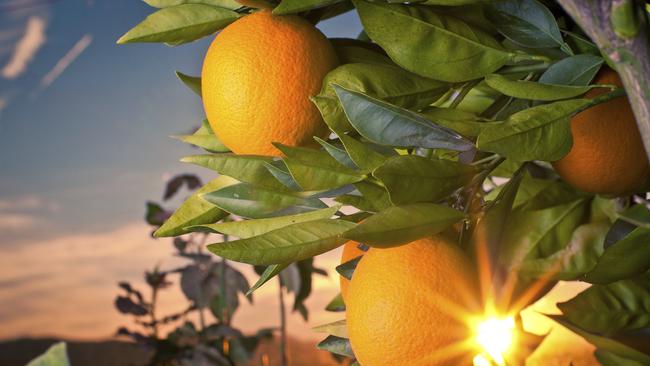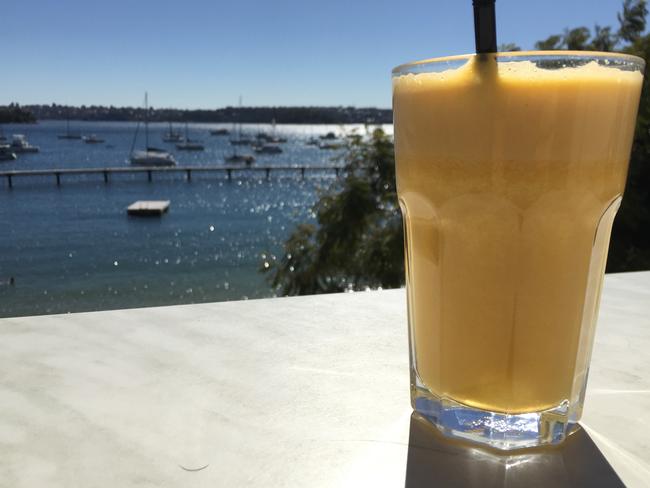Feeling the squeeze: Juice supplies about to dry up as our oranges head overseas
FIRST, there was the great avocado famine of 2016. Now, 2017 is set to bring a whole new shortage crisis for brunch lovers with orange juicers squeezed.

FIRST, there was the great avocado famine of 2016 that had inner city hipsters crying into their bereft pieces of toasted sourdough.
Now, 2017 is set to bring a whole new shortage crisis for brunch lovers with Australian orange juicers currently feeling the squeeze.
This season’s supplies of Valencia oranges, the type used to produce Australia’s fresh juice, have all but dried up and the impact is soon to be felt at the consumer level.
The citrus fruit will be in chronically short supply until at least June, which means either juice prices are about to skyrocket or supplies are about to get scarce.
Or possibly both.

While the country’s citrus farmers are celebrating their biggest, and most lucrative, export year in the industry's history, in a strange turn of events, juicing companies are now considering importing oranges to meet demand.
Some have suggested it could drive prices as high as nearly $10 for a two litre bottle.
But Citrus Australia chief executive Judith Damieni said importation of fruit was unlikely.
She said the current shortage was partly fuelled by the record 2016 citrus export season, which saw demand from overseas markets, predominantly China, absorb the vast majority of Valencia supplies before Christmas.
Normally, Valencias are in plentiful supply for Australian juice companies until at least March.
“It will impact the availability or pricing of fresh Australian juice,” Ms Damieni said.
“Until the next wave of crop comes in, in June, it may impact on the supply of that product.
“I don’t think we’ll see empty shelves, because there will always be a supply, but it will just depend on the demand.

“But with this summer having been warmer for longer, that demand has gone up.”
Ms Damieni, based in the citrus growing region of Mildura in Victoria, said last year’s record export season saw more than a third of Australia’s citrus fruit exported.
It’s a percentage that is only expected to increase in coming years.
The insatiable overseas demand for Australian oranges last year meant that when the naval orange season ended, Valencias growers, who normally only export about five per cent of their crops, seized the opportunity presented to them.
“For Valencias there is no real export market, however in naval oranges about 65 per cent were exported last year,” Ms Damieni said.
“Demands were still strong at end of naval season last year and, because demands were so strong, Valencias were filling the gap.
“They were mostly gone by Christmas.”
Approximately 220,000 tonnes of Australian citrus was exported last year, which netted growers around $340 million.
“It has been good for our growers. One grower has been farming since 1960 and he said he has never seen such high prices for Valencias,” Ms Damieni said.
Bundy Juice manager Mark D’Silva told the Bundaberg News-Mail his company had been unable to produce orange juice for the past couple of weeks and had been told there would be a five month wait for more fruit.

He said the company was looking at potentially importing oranges to fill the gap.
“We have been trying to contact growers around Australia to support the local market as opposed to getting oranges from overseas,” he said.
“For many years, we have been using fruit from Australia and that is something that we really do not want to change.”
However, he said importing oranges would lead to a massive increase in cost, which would inevitably be passed on to the consumer.
“It will cost us about $1.80 per litre,” he said.
“It is not a viable solution to put juice that is so expensive in a bottle because, by the time it leaves our factory, a 2L bottle will cost about five to six dollars.
“The distributor will then have to put his mark-up on it and then the retailer so in the end, the customer might then have to pay nine dollars for a bottle of juice.”



